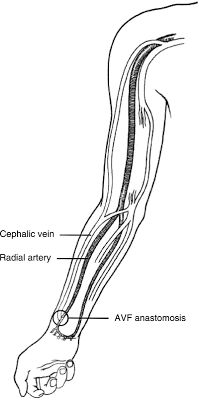 We all realize that maintaining vascular access is a dialysis patient’s life-line. Many patients must undergo multiple interventional radiology or surgical procedures in order to sustain fistula or graft patency over a prolonged period of time.
We all realize that maintaining vascular access is a dialysis patient’s life-line. Many patients must undergo multiple interventional radiology or surgical procedures in order to sustain fistula or graft patency over a prolonged period of time.
The physical exam can be a useful tool in the examination of vascular access. Stenoses–often the culprit for a malfunctioning fistula or graft–can be characterized as either inflow or outflow stenoses, with outflow stenoses being the most common. Both may occur in the same access.
Inflow stenosis–the definition for which is debatable but one reasonable one is a narrowing of >50% when compared to the native artery–can be detected by an abnormal pulse augmentation exam. In a normal fistula, occlusion of the access several centimeters beyond the arterial anastamosis should lead to a detectable increase in the magnitude of the distal fistula pulse. When there is substantial inflow narrowing, no such increase will be observed. In addition, a weak pulse or lack of continuous thrill may also be indications of inflow stenosis.
Outflow stenosis can best be detected by an abnormal arm elevation test. In a normal fistula or graft, having the patient raise their arm should allow venous collapse and flattening of the fistula; if there is significant outflow stenosis the fistula may remain plump with arm elevation. In addition, a water-hammer pulse, a loud systolic thrill, or prolonged post-dialysis bleeding may also be signs of outflow stenosis.
A relatively recent study (Asif et al, CJASN 2007) confirmed that a good physical exam correlates well with angiographic data.
